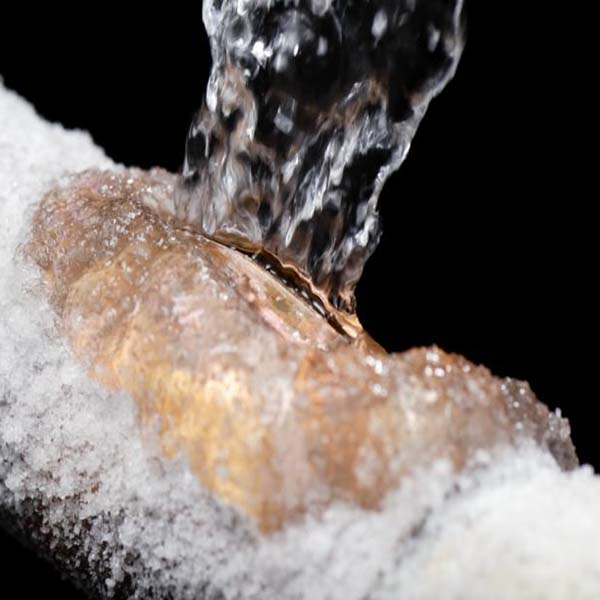
Frozen Pipes: How to Keep the Icicles Outside
You’re headed out on vacation to escape the frigid winter weather in Wyoming or Colorado (Sometimes even New Mexico!) and wondering what to set your thermostat at. You don’t want your pipes to freeze, but you also don’t want to pay for your house to feel like the tropics when no one is there to enjoy the heat.
A good rule of thumb is to set your thermostat no lower than 50 degrees to ensure neither your appliances or pipes freeze while you’re away. However, every house is different, and if you know you have any pipes in your exterior walls, consider keeping the heat set between 55 and 60 degrees Fahrenheit.
While you may be tempted to drop the temperature as low as 45 degrees to save on your heating bill, remember that some rooms in your house most likely get colder than others because of the number of exterior walls or windows, so keeping the temperature set to at least 50 degrees should keep all of your pipes and appliances happy.
A few other suggestions to prep your house include:
- Opening the cabinet doors under the sinks in your kitchen and bathrooms to help warm air reach the pipes and prevent cold pockets from forming.
- Turning your water heater to low or vacation mode.
- Set the faucets for water to very slightly drip out. Running water through the pipes, even at a slow drip, can help prevent pipes from freezing—especially if they are on exterior walls.
Even with precautions taken, accidents can still happen. In fact, burst pipes are one of the most common causes of property damage during cold weather, often costing homeowners up to significant money to fix. If you’re in this situation, don’t worry. We’ll get your home and property back to normal and work directly with your insurance.
If you return home to find that your faucets won’t flow and your toilet won’t refill after flushing, there is a good chance you have a frozen pipe. Other sure tell signs include a water line coated in frost or bulging in one spot. The good news is that a frozen pipe doesn’t necessarily mean a burst pipe. So what do you do?
- Shut off the water supply to the frozen section of pipe, or the whole house. The frozen water in the pipe could be acting as a plug, preventing water from leaking out of any cracks in the pipe.
- Use a hairdryer, an electric heating pad, or space heater to thaw the frozen length of pipe. Be prepared with towels and a bucket just in case water begins to make its way out of cracks you may be unable to see in the pipe.
- Continue applying heat until full water pressure is restored.
If you’re unable to find or access the frozen section of pipe or you’re unable to thaw the pipe, call a licensed plumber right away. If there are signs the pipe did burst and there is water damage to your property…give us a call. We have special equipment to see water damage behind the walls, floors, and ceilings. We’ll immediately begin removing as the water from your home and property and use equipment o minimize any chance of mold or mildew growing in the damp space. And if the worst happens and you return home to find a lake inside your house from a burst pipe, immediately shut off the main water supply to minimize flooding (if your basement is flooded, do NOT wade into the water due to the possibility of water in your basement conducting electricity.
Although you’d much rather avoid bursts pipes at all costs, thankfully most homeowners’ insurance covers burst pipes and the resulting water damage in case you do ever find yourself knee deep in water.
Water Extraction Experts specialize in water damage restoration, sewage cleanup, mold removal, fire & smoke damage restoration, flood damage cleanup. We have 3 locations to serve you.
EMERGENCY 24/7 WATER DAMAGE
CALL: 970-581-4498 Northern Colorado
CALL: 307-220-5900 Southeastern Wyoming
CALL: 505-250-6500 Albuquerque and Santa Fe, New Mexico Areas
